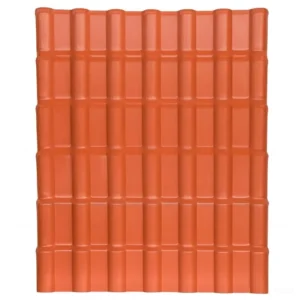Contact Us
Frequently Asked Questions
Synthetic resin tiles are widely used in public and civil buildings, such as villas, townhouses, pavilions, clubs, hotels, resorts, etc., as well as in flat slope renovation projects, rural renovation, and new rural construction.
1. The spacing between construction standard rafters should not exceed 66 cm.
2. Use clamp-on dovetail screws to prevent thermal expansion and contraction.
3. Use waterproof caps with rubber rings when installing resin tiles.
4. Control the slope of resin tiles between 22% and 25%.
5. When installing resin tiles longer than 6.5 meters, they must be cut and installed with overlaps.
1. Excellent weather resistance
- The ASA layer offers superior UV resistance and corrosion resistance, ensuring that the material does not fade or age even after prolonged exposure to outdoor conditions, with a service life of up to 15 years.
2. Waterproof and leak-proof
- The roof tiles feature a wave-shaped or traditional-style design with tight overlaps, ensuring smooth drainage and effectively preventing leaks.
3. Lightweight and high-strength
- Resin tiles are lightweight, reducing roof load, yet they offer strong impact resistance and load-bearing capacity.
4. Thermal insulation and soundproofing
- Resin material has a low thermal conductivity, effectively insulating against heat and noise, improving indoor environmental comfort.
5. Eco-friendly and energy-efficient
- Free from asbestos and other harmful substances, recyclable, and produced with low energy consumption.
6. Easy installation
- Synthetic resin tiles are easy to install, with simple construction processes that enhance efficiency and reduce costs.
This is due to the fact that resin roof tiles have a certain coefficient of expansion. Under conditions of extreme temperature fluctuations between day and night, they may produce unusual noises, which is a normal phenomenon. The severity of the noises is also related to the tightness of the screws. If the screws are overtightened, it can also cause the resin roof tiles to emit noises during thermal expansion and contraction. Therefore, during installation, the screws should be tightened to an appropriate degree.
Resin tiles exposed to ultraviolet radiation over time may fade and age. The extent of fading varies depending on the quality of the tile material, primarily due to differences in material composition and manufacturing processes. Lower-quality resin tiles have poorer resistance to aging and tend to fade and change color more quickly; In coastal areas, the aging process may accelerate. Typically, this is a gradual lightening process, and no mottling or discoloration will occur.


